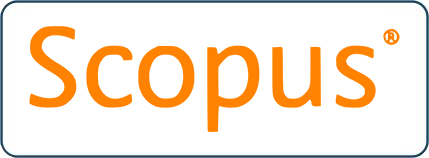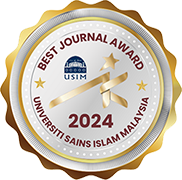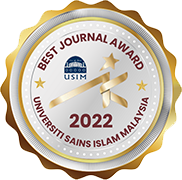THREE-DIMENSIONAL (3D) PRINTED FOOD PRODUCTS FROM HALAL FORENSIC PERSPECTIVE: A PRELIMINARY REVIEW
DOI:
https://doi.org/10.33102/mjsl.vol10no1.382Keywords:
Halal Forensics, Bio-Printed Product, regulatory framework, Three-Dimensional (3D), 3D PrintingAbstract
The emergence of three-dimensional printed (3DP) technology in the food industry is one of the possibilities for a source of global halal food supply in the future. Producing individualized nutritional meals, food sustainability, and developing new solutions worldwide are just a few of the benefits of using 3DP. However, there are still issues with 3DP, especially regarding safety issues and all the risks to the consumer that needs to be overcome. Besides, it will safeguard each essential component of food production for commercial purposes and acceptance by the public. The objective of this study is to gather information regarding the potential of 3DP as well as its availability in the halal market. This study revolves around the five main pillars of halal forensics for halal-based products. This qualitative study employs library research as the data collection method. Data were analysed using content analysis method. Based on this study, a new regulatory framework for halal 3DP food products can be suggested through the halal forensics concept. This allows the authenticity of halal 3DP food products to be certified to safeguard consumers when consuming especially the Muslim community.
Downloads
References
Alcacer, V., & Cruz-Machado, V. (2019). Scanning the industry 4.0: a literature review on technologies for manufacturing systems. Engineering Science and Technology, An International Journal, 22, 899-919. https://doi.org/10.1016/j.jestch.2019.01.006
Al-Ghazālī, A. H. M. b. M. (1997). Al-Mustasfā min ʿilm al-usūl. Beīrut: Dār Ihya' al-Turath al-'Arabi.
Alias, A., & Abdul Rahim, R. A. (2010). Aplikasi elemen pemikiran saintifik dalam pengajian syariah. Jurnal Fiqh, 7, 1-28. https://doi.org/10.22452/fiqh.vol7no1.1
Ash-Ṣābūnī, M. A. (1980). Rawāi' al-bayān tafsīr ayāt al-ahkām min al-qur'ān. Damsyīk: Maktabah al-Ghazālī.
Baiano, A. (2020). 3D printed foods: A comprehensive review on technologies, nutritional value, safety, consumer attitude, regulatory framework, and economic and sustainability issues. Food Reviews International, 38(5), 986-1016. https://doi.org/10.1080/87559129.2020.1762091
Baharuddin, A., Ruskam, A., & Yacob, A. (2015). Prinsip Asas Sains Forensik Dari Perspektif Islam: Suatu Sorotan Literatur. Sains Humanika, 2(2008), 7-15. Retrieved from http://www.sainshumanika.utm.my/index.php/sainshumanika/article/view/556
Baharuddin, A. S., Ghazali, M. I. M., Harun, M. A. W., Mutalib, L. A., Ismail, W. A. F. W., Shaarani, S. Md., Alauddin, M. S., Razali, M. F. A. (2020). Three-dimensional (3D) Printed Halal Meat: Do We Need A New Regulatory Framework? INSLA E-Proceedings. 3(1), 438-449. https://insla.usim.edu.my/index.php/eproceeding/article/view/49
Baharuddin, A. S., Ismail, W. A. F. W., Mutalib, L. A., Hashim, H., Jusof, N., Ghazali, M. I. M., ... & Harun, M. A. W. (2021). Halal Forensics Issues Involving Three-Dimensional (3D) Printing Technology of Cultured Meat. HALAL REVIEWS, 1(1), 3-15. https://doi.org/10.55265/halalreviews.v1i1.7
Crispino, F. (2013). Principles of forensic science. Encyclopedia of forensic sciences (2nd ed.). Elsevier Ltd. http://doi.org/10.1016/B978-0-12-382165-2.00192-6
Dankar, I., Haddarah, A., Omar, F. E. L., Sepulcre, F., & Pujola, M. (2018). 3D printing technology the new era for food customization and elaboration. Trends in Food & Technology, 75, 231-242. https://doi.org/10.1016/j.tifs.2018.03.018
Dick, A., Bhandari, B., & Prakash, S. (2019). 3D printing of meat. Meat Science, 153, 35-44. https://doi.org/10.1016/j.meatsci.2019.03.005
Faezbaderolhesam. (2020, December 3). Isu tukar daging: JAKIM ke Singapura bagi mendapatkan penjelasan. Al-Hijrah Online.
Gross, B. C., Erkal, J. L., Lockwood, S. Y., Chen, C., & Spence, D. M. (2014). Evaluation of 3D printing and its potential impact on biotechnology and the chemical sciences. Analytical Chemistry, 86(7), 3240-3253. https://doi.org/10.1021/ac403397r
Handral, H. K., Tay, S. H., Chan, W. W., & Choudhury, D. (2020). 3D printing of cultured meat products. Critical Reviews in Food Science and Nutrition, 62, 272-281. https://doi.org/10.1080/10408398.2020.1815172
Hashim, R, & Qadous, A. IH. (2014). The inductive research method in early islamic tradition based on Ibn Tufayl’s work-hayy Ibn Yaqzan. Revelation and Science, 4(2). http://irep.iium.edu.my/42317/1/RH_%26_Allam_Inductive_method_Ibn_Thufayl_Revelation_%26_Sc143-589-1-PB.pdf
Hassan, M. S. (Ed.). (2018). Forensik Halal: Perspektif Sains, Syariah & Perniagaan. Penerbit USIM, Universiti Sains Islam Malaysia (USIM).
Ismail, I., Hwang, Y.-H., & Joo, S.-T. (2020). Meat analog as future food: A review. Journal of Animal Science and Technology, 62(2), 111-120. https://doi.org/10.5187/jast.2020.62.2.111
Kewuyemi, Y. O., Kesa, H., Adebo. O. A. (2021). Trends in functional food development with three-dimensional (3D) food printing technology: Prospects for value-added traditionally processed food products. Critical Reviews in Food Science and Nutrition. 61(5), 1-38. https://doi.org/10.1080/10408398.2021.1920569
Ibn Kathīr, I. b. U. I. (1999). Tafsīr al-Qur'ān al-ʿazīm (2 ed. Vol. 8): Dār Tayyibah.
Lipson, H., & Kurman, M. (2013). Fabricated: The New World of 3D Printing: Indianapolis: John Wiley and Sons.
Lupton, D., & Turner, B. (2016). ‘Both fascinating and disturbing’: Consumer responses to 3D food printing and implications for food activism. Digital Food Cultures, 1-17. https://www.researchgate.net/publication/310021562_'Both_Fascinating_and_Disturbing'_Consumer_Responses_to_3D_Food_Printing_and_Implications_for_Food_Activism
L. Tran, J. (2016). 3D-Printed food. Minnesota Journal of Law, Science & Technology, 17, 857-879. https://scholarship.law.umn.edu/mjlst/vol17/iss2/7
Malagie, M., Jensen, G., Graham, J.C., and Donald L. Smith. Food industry processes. Encyclopaedia of Occupational Health and Safety, Chapter 67. Food Industry. Adapted from the 3rd edition “Encyclopaedia of Occupational Health” articles “Food industries”.
McKinsey. (2018). Food processing & handling. P. 10. United States of America. https://www.mckinsey.com/~/media/mckinsey/industries/advanced%20electronics/our%20insights/whats%20ahead%20for%20food%20processing%20and%20handling/mckinsey-on-food-processing-and-handling-ripe-for-disruption.pdf
Mohajan, H. K. (2018). Qualitative research methodology in social sciences and related subjects. Journal of Economic Development, Environment and People, 7(1), 23-48. https://mpra.ub.uni-muenchen.de/85654 /
Matias, E., & Rao, B. P. (2015). 3D printing: On its historical evolution and the implications for business. Portland International Conference on Management of Engineering and Technology, PICMET 2015, 551-558. https://doi.org/10.1109/PICMET.2015.7273052.
Noorani, R. I. (2017). 3D Printing: Technology, Applications, And Selection: CRC Press.
Pereira, A., Romero, F. (2017). A review of the meanings and the implications of the industry 4.0 concept. Procedia Manufacturing,13, 1206–1214. https://doi.org/10.1016/j.promfg.2017.09.032.
Razak, R., Ahmad, M. H., Saharuddin, N. S., & Baharuddin, A. S. (2019). Halal Forensics Model: An Appraisal Within The Context of Malaysian Legal System. International Conference on Law and Justice. 5th November 2019, Akademi Pengajian Islam, Universiti Malaya.
Sarma, R. (2020, November 11). An insight on how 3D printing is revolutionizing the food industry. SiliconIndia. https://www.siliconindia.com/news/general/an-insight-on-how-3d-printing-is-revolutionizing-the-food-industry-nid-214592-cid-1.html
Sun, J., Zhou, W., Yan, L., Huang, D., & Lin, L.-y. (2018). Extrusion-based food printing for digitalized food design and nutrition control. Journal of Food Engineering, 220, 1-11. https://doi.org/10.1016/j.jfoodeng.2017.02.028
Downloads
Published
Issue
Section
License
Copyright (c) 2022 Ummu Hani Roslin, Mohamed Faiz Asyraf Razali, Mohd Ifwat Mohd Ghazali, Ahmad Syukran Baharuddin

This work is licensed under a Creative Commons Attribution-NonCommercial 4.0 International License.















































